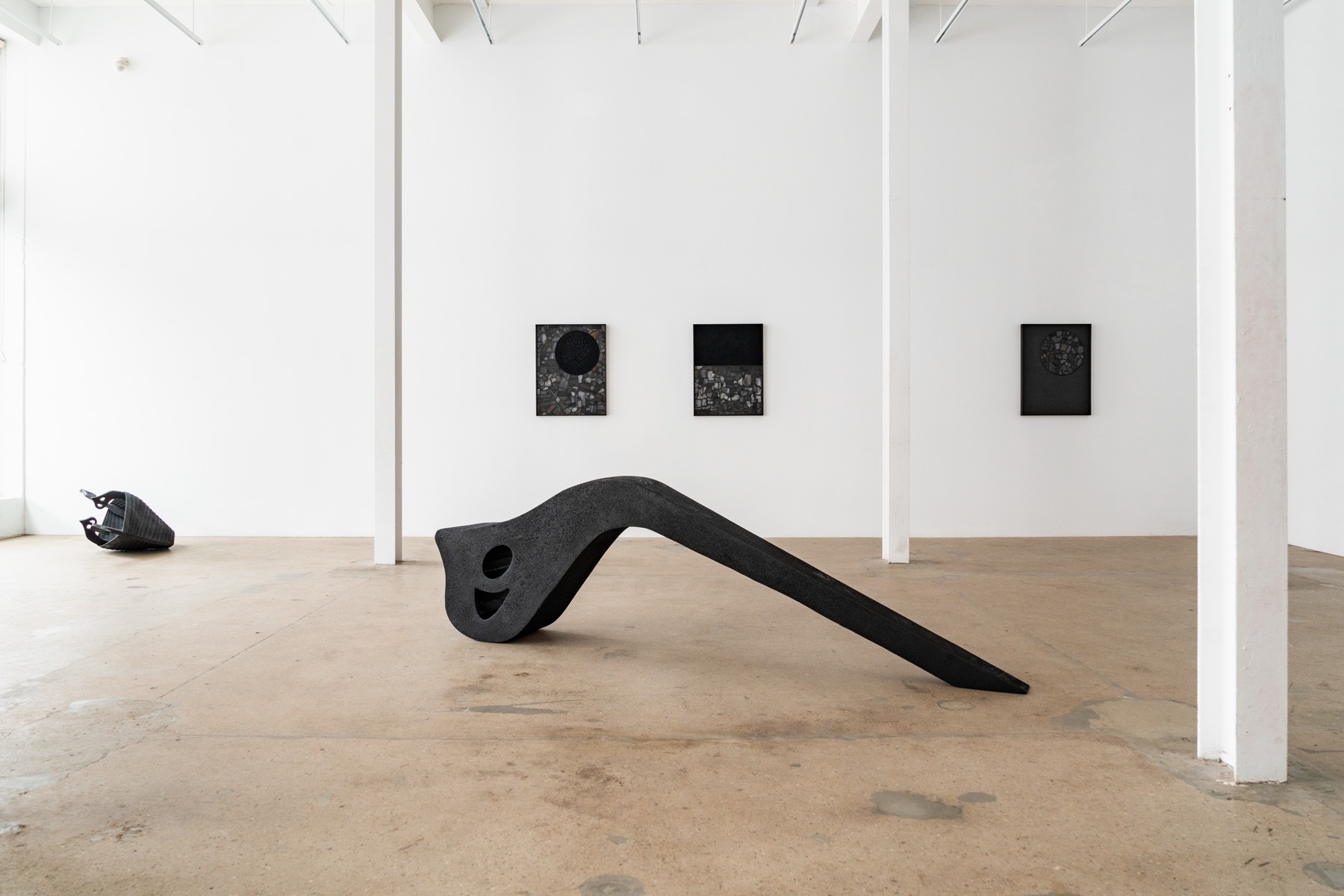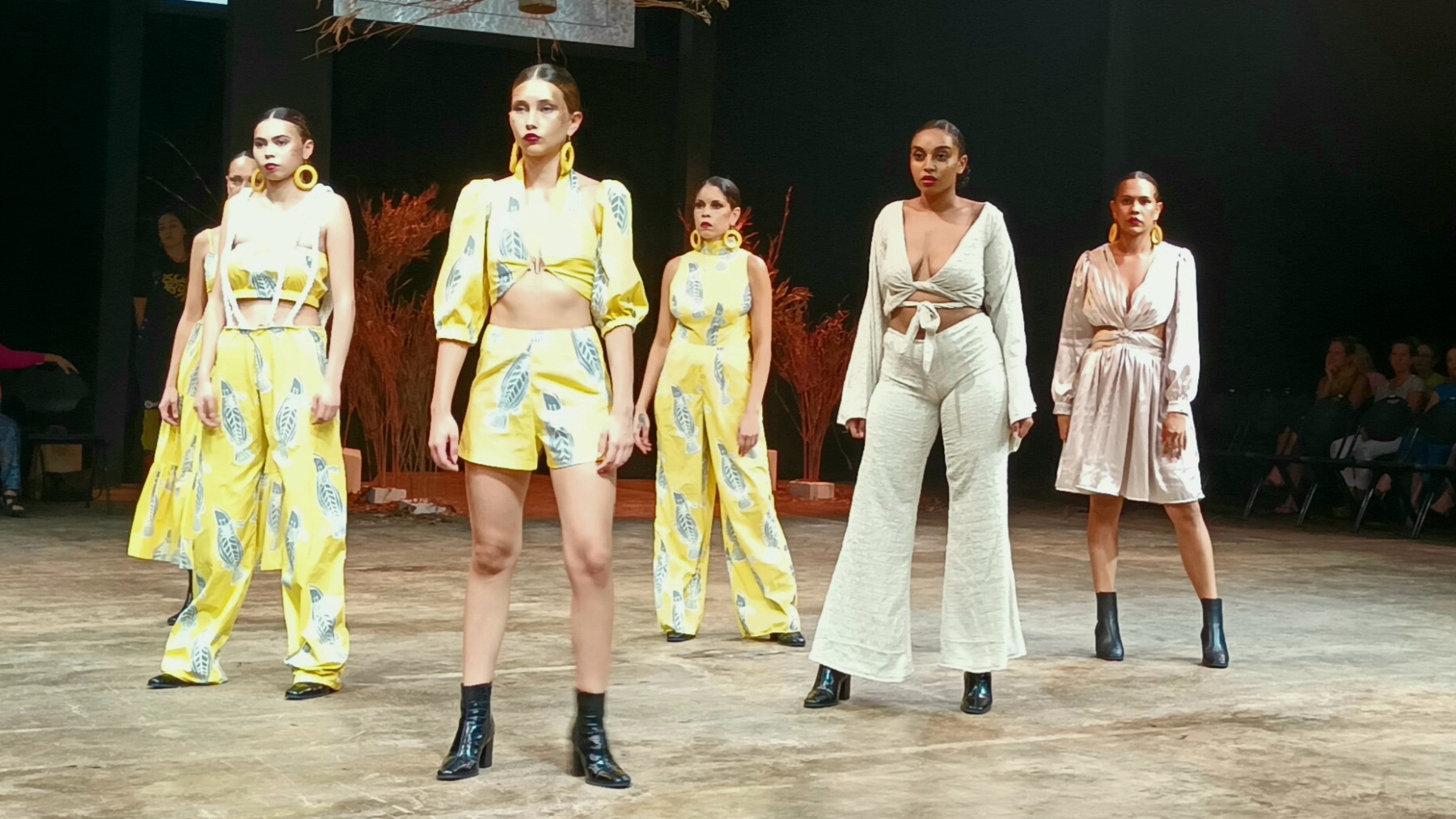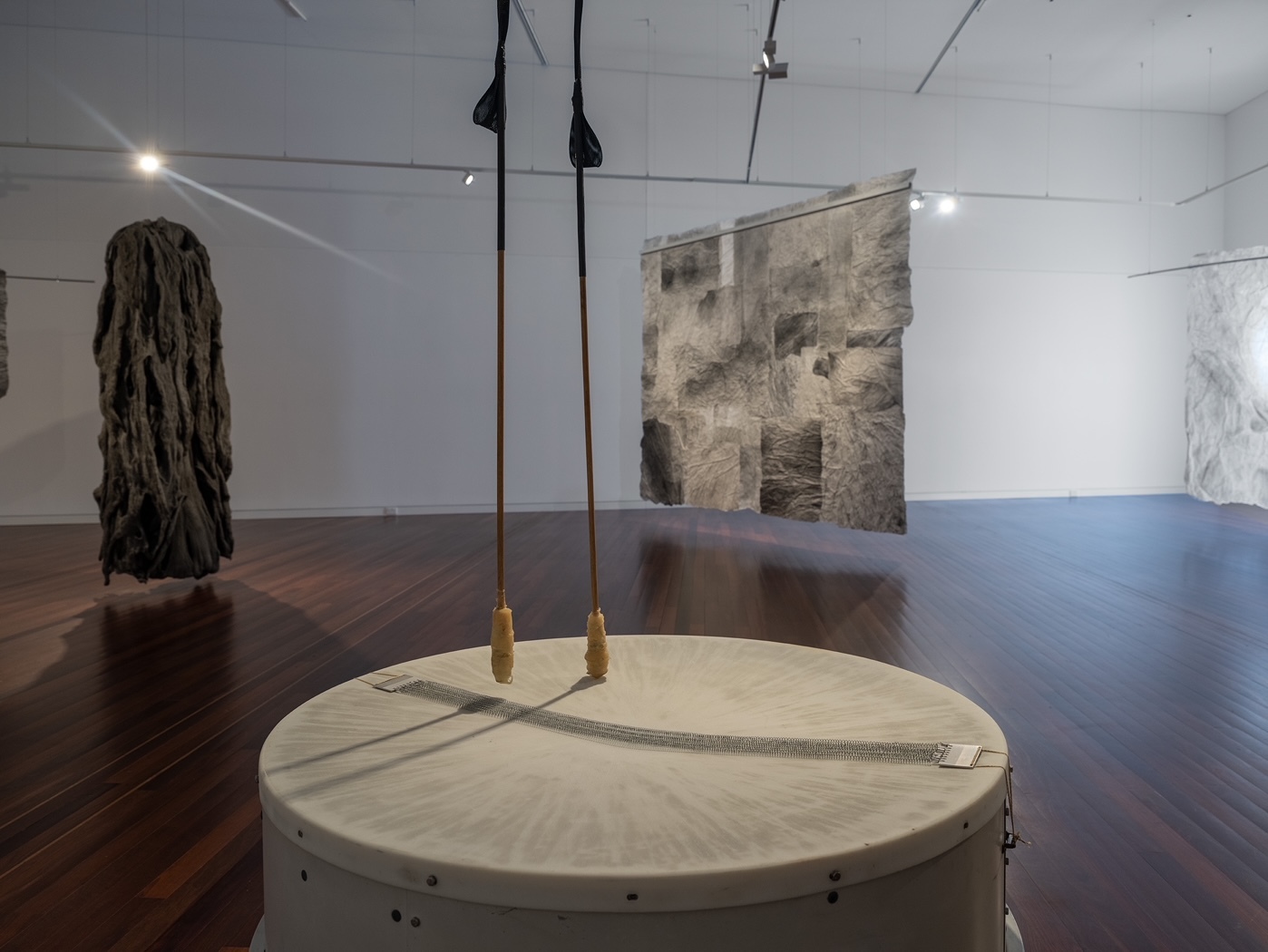Language is powerful, and it is political. As I enter Outer Space to view Meanjin (Brisbane) based artist Sha Sarwari’s most recent exhibition, 1Vernacular, I first notice the overwhelming presence of entirely black works. Second, I note the presence of symbols that represent a language I recognise but cannot understand. The modestly sized, monochromatic selection of works from 2017 to 2022, include an array of framed, wall-based pieces and three-dimensional objects.
The exhibition install is rhythmic and balanced, and the content of the work is initially disguised in their seemingly gestural, abstract forms. I feel invited to undertake an initial survey of the space, my eyes moving around the room as I rotate. My body stops as my eyes and mind attempt to make sense of the objects in the gallery’s centre and front window spaces. I then take a closer look the works hanging on the walls.
I am drawn to the two works hanging on the back wall of the gallery. Directing my attention to the one on the right, Untitled(2019), I realise I have seen this work before, in reproduction, and I am as enamoured by it in person as I thought I might be. Comprised of charcoal powder and PVA glue on canvas, the 90 x 120cm work draws me in to become briefly lost in its void-like, albeit tightly framed, space. My eyes settle on the centre top-third, where the canvas is cut, and a shape emerges from the surface. The surrounding works tells me this shape might be a symbol, a letter, or a word, but to my eyes, in this light, it might also be a bird. The work speaks to the history of painting, of colour, of form, of surface, but it is more profound and louder than the sum of its parts. It hits me in the chest like only minimal objects imbued with subjectivity and emotion can.
I move through the space slowly, navigating to the front right corner of the gallery, where there is another work I have seen before in image only. Like a moth to a flame(2019) is constructed from images of newspaper cut-outs, collaged, printed on silk, and fashioned into a perahan, the traditional dress for men in Afghanistan. The texts that fill the garment tell the story of the Australian government’s inhumane treatment of asylum seekers. The perahan is propped on a chair in front of a small hanging work of shimmering black shapes, Peace(2021). An etched symbol fills most of the surface. When I meet with Sha, he tells me the word means ‘peace’ in his first language, Hazaragi. I learn that this is the dialect of the Hazara people of Afghanistan; once a majority in their country, they were first marginalised during the reign of Emir Abdur Rahman Khan (1880-1901) and more recently have suffered much persecution by both the Taliban and al-Qaeda.
Sha came to Australia in 2000 as an asylum seeker from Afghanistan. In true form of our government, his arrival and experience of wanting a safe place to live his life was not easy, warm, nor as welcoming as it should and could have been. The treatment of refugees in this country is clearly articulated in Sha’s earlier works, including ForcedLeisure (2015), a sculpture that resembles a hammock, which has been produced from barbed wire, and National icon(2015), an image of a young person with brown skin lying on the beach, wearing a bright orange flotation device.
I move across the room, between the two symbolic sculptures, to the suite of three Untitled(2022) works hanging on the opposing wall. As I walk toward them, my eyes flick across each glittering surface–they are all constructed of charcoal pieces and charcoal powder–but settle on the central work. It is divided almost in half, the lower half shimmering and reflective with geometric charcoal pieces collaged into a seamless surface, the upper half a void of black charcoal powder with script etched across its width. I can’t remember what the script translates into in English as I write this reflection, and the title gives no clues. Still, the combination of the treatment of the material speaks to both the void of the unknown and a shimmering of hope.
The combination of works spanning the last five years in Vernacular tells the story of an artist grappling with place, memory, loss, and hope. It is a story of resilience, and I can’t wait to see what comes next.
Courtney Coombs is an artist, writer, and facilitator.






